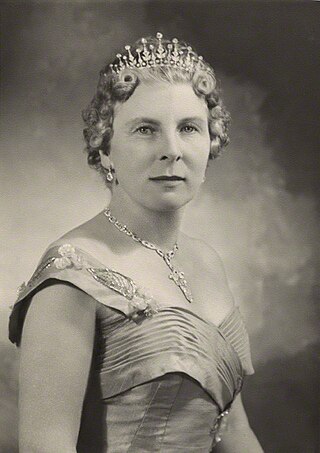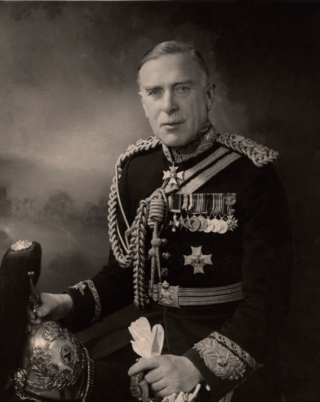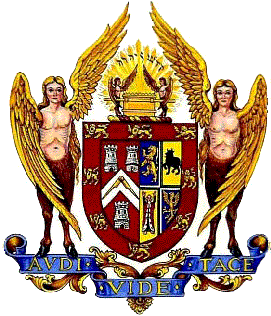
A Masonic lodge, often termed a private lodge or constituent lodge, is the basic organisational unit of Freemasonry. It is also commonly used as a term for a building in which such a unit meets. Every new lodge must be warranted or chartered by a Grand Lodge, but is subject to its direction only in enforcing the published constitution of the jurisdiction. By exception the three surviving lodges that formed the world's first known grand lodge in London have the unique privilege to operate as time immemorial, i.e., without such warrant; only one other lodge operates without a warrant – the Grand Stewards' Lodge in London, although it is not also entitled to the "time immemorial" title. A Freemason is generally entitled to visit any lodge in any jurisdiction in amity with his own. In some jurisdictions this privilege is restricted to Master Masons. He is first usually required to check, and certify, the regularity of the relationship of the Lodge – and be able to satisfy that Lodge of his regularity of membership. Freemasons gather together as a Lodge to work the three basic Degrees of Entered Apprentice, Fellowcraft, and Master Mason.
The history of Freemasonry encompasses the origins, evolution and defining events of the fraternal organisation known as Freemasonry. It covers three phases. Firstly, the emergence of organised lodges of operative masons during the Middle Ages, then the admission of lay members as "accepted" or "speculative" masons, and finally the evolution of purely speculative lodges, and the emergence of Grand Lodges to govern them. The watershed in this process is generally taken to be the formation of the first Grand Lodge in London in 1717. The two difficulties facing historians are the paucity of written material, even down to the 19th century, and the misinformation generated by masons and non-masons alike from the earliest years.

Lady May Helen Emma Abel Smith was a member of the British royal family. On her mother's side she was a great-granddaughter of Queen Victoria and on her father's side she was a great-great-granddaughter of King George III and the niece of Queen Mary, wife of King George V and mother of two kings. She led a private life in Britain. From 1958 until 1966, she lived in Brisbane, while her husband, Sir Henry Abel Smith, served as the governor of Queensland.

Colonel Sir Henry Abel Smith, was a British Army officer who served as Governor of Queensland, Australia. He married Lady May Cambridge, a niece of Queen Mary, consort of King George V.

Ian Richard Peregrine Liddell-Grainger is a British Conservative Party politician and former property developer. He was MP for Bridgwater from 2001 until 2010, and since then has been MP for Bridgwater and West Somerset. He is a great-great-great-grandson of Queen Victoria through his mother.

Ayton is a small village located in the historic county of Berwickshire, today part of the Scottish Borders region. It is on the Eye Water, from which it is said to take its name: Ayton means 'Eye-town'. It contains the former ancient tollbooth or town hall with a clock tower, the Hemelvaart Bier Cafe and a village store.

The United Grand Lodge of England (UGLE) is the governing Masonic lodge for the majority of freemasons in England, Wales, and the Commonwealth of Nations. Claiming descent from the Masonic Grand Lodge formed 24 June 1717 at the Goose & Gridiron Tavern in London, it is considered to be the oldest Masonic Grand Lodge in the world, together with the Grand Lodge of Scotland, and the Grand Lodge of Ireland.

Sir Charles Malcolm Barclay-Harvey, KCMG was a British politician and Governor of South Australia from 12 August 1939 until 26 April 1944.
Michael Evan Victor Baillie, 3rd Baron Burton DL was a British peer and maternal grandson of the 9th Duke of Devonshire.

George Augustus Frederick John Murray, 6th Duke of Atholl, was a Scottish peer, important landowner, and freemason.

Clan Sinclair is a Highland Scottish clan which holds the lands of Caithness, the Orkney Islands, and the Lothians. The chiefs of the clan were the Barons of Roslin and later the Earls of Orkney and Earls of Caithness.

Clan Home is a Scottish clan. It held immense power for much of the Middle Ages and dominated the eastern Scottish Borders. It produced no fewer than eight Wardens of the Eastern March – more than any other family.

Clan Swinton is a Scottish clan of the Scottish Lowlands.

General Sir Francis John Davies, was a senior British Army officer who commanded the 8th Division during the First World War.

Ayton Castle is located to the east of Ayton in the Scottish Borders. It is 9 kilometres (5.6 mi) north-west of Berwick-upon-Tweed, in the former county of Berwickshire. Built around a medieval tower house, the present castle dates largely from the 19th century. Ayton Castle is the caput of the feudal barony of Ayton. The castle is protected as a category A listed building, and the grounds are included in the Inventory of Gardens and Designed Landscapes in Scotland, the national listing of significant parks and gardens.
The Grand Lodge of New Jersey Free & Accepted Masons is the official governing body of New Jersey Masonic Lodges as recognized by other Grand Jurisdictions throughout the world. As early as 1730, New Jersey was one of the first states with active Freemasonry. The Grand Lodge of NJ was formally established in 1787. The Most Worshipful Prince Hall Grand Lodge of State of New Jersey and The Most Worshipful Grand Lodge of New Jersey recognize each other as Masonic Grand Lodges.
Anne Abel Smith, formerly known as AnneLiddell-Grainger, is a British aristocrat and Christian charity worker. A great-great-granddaughter of Queen Victoria and a cousin of Queen Elizabeth II, she was married for 25 years to Scottish politician David Liddell-Grainger and is the mother of Conservative MP Ian Liddell-Grainger. In her sixties, she attended gospel meetings in Kennington, did missionary work in Africa, and was often invited to Royal Ascot and other functions by the queen.














